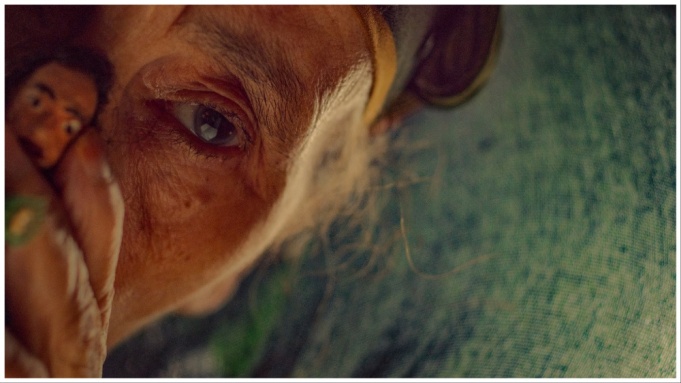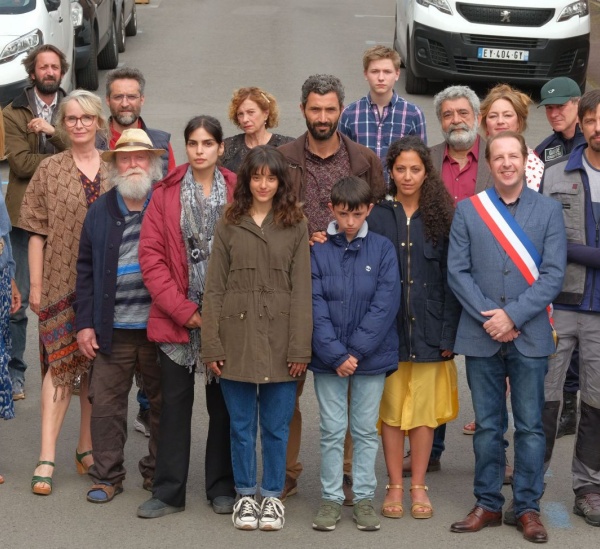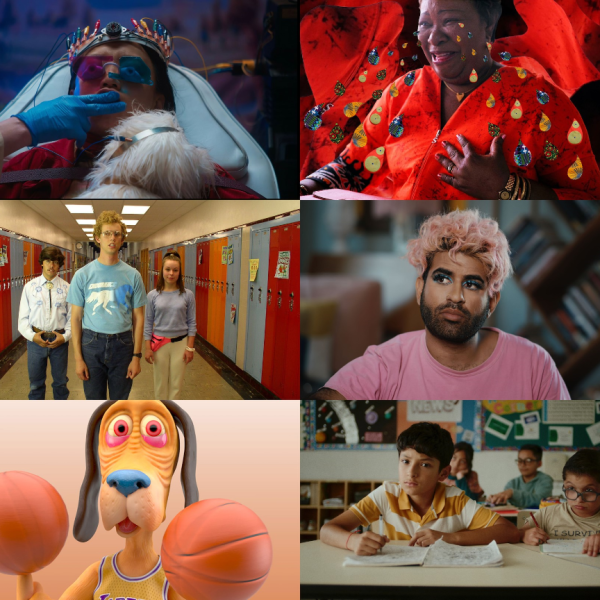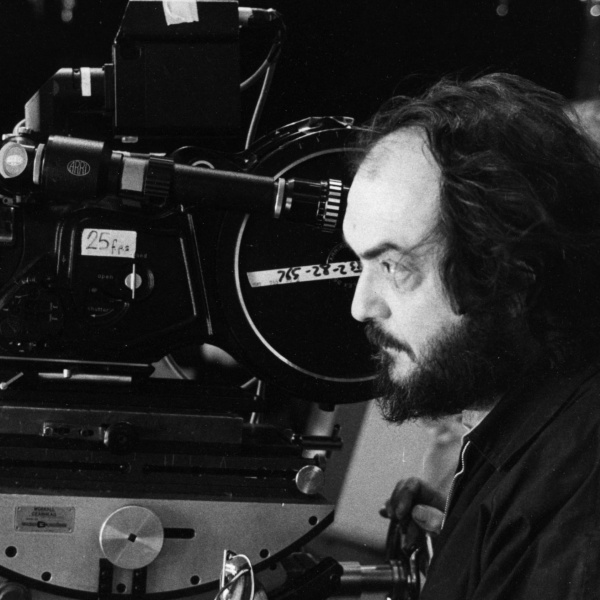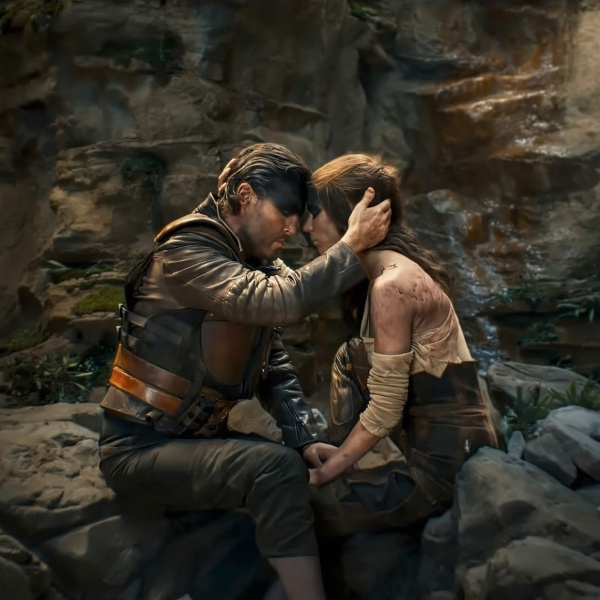While photographs can be lies and we’re probably all taking and distributing too many pictures of ourselves in the age of smartphones, there’s something to be said for having these accessible mementos of a life lived, at least as reference for later on, when you might be clamoring for proof that you actually existed. And while audio-visual evidence isn’t necessary for us to remember everything, there can be an extent to which an absence of documentation can prove an existential burden. It can be difficult to build an identity when your memories are unreliable. If you have no visual record of you as a child, your parents, or guardians at that time, or what your home looked like, to what extent can you trust what you think you remember?
This is one of the central ideas driving Moroccan filmmaker Asmae El Moudir’s riveting, inventive Un Certain Regard entry “The Mother of All Lies.” Her film starts with the desire to know why she has only one photograph from her childhood, and why the girl presented in the image seems to be so different from her. From that starting point, she reaches a point of recreating her family’s home and neighborhood in miniature form, as means of interrogating both personal and national history.
Given the exploration of a country’s trauma through the use of diorama models, “The Mother of All Lies” will inevitably draw some comparisons to “The Missing Picture” (2013), Rithy Panh’s film that recreated the atrocities of Cambodia’s Khmer Rouge. It’s a considerably different film, as that film was able to use a solid amount of archival footage, which “The Mother of All Lies,” as part of its very setup, is not able to do at all.
As an adult, El Moudir has been troubled by a matter concerning her childhood, specifically that she has only ever had one photograph of herself as a child. She’s never been convinced it’s actually her. The photo is of smiling children sitting in a yard. At the back in the photograph, almost out of frame, a shy-seeming little girl can be seen sitting on a bench. This shy girl is El Moudir, insists her mother, who first gave her daughter the photo around age 12, following envy at the wealth of holiday photos shown to El Moudir by a childhood friend.
This perceived lie was a key conflict with her mother during her teenage years. While her mother would still insist that it really is her in the photo, El Moudir managed to pressure an explanation out of her regarding why it’s apparently the only picture of her pre-teen years: under the pretext of it being forbidden by their religion, El Moudir’s grandmother — the stern head of the family — refused to have any human representation within her house. Hence, no photographs.
When her parents are in the process of moving out of the Casablanca house they’d lived in throughout her life (with the grandmother), the opportunity arises for El Moudir to dig deeper into other buried truths from the home’s history. The matter of the photograph is used as a catalyst by the filmmaker to bring up other memories or stories she’s treated with suspicion. Sure enough, the reason for her grandmother’s rejection of photography runs much deeper than the reason previously cited. And unsurprisingly, the matriarch is a reluctant subject for a documentary, though she is ultimately onscreen for a considerable amount of “The Mother of All Lies,” albeit while often gazing into the camera with visible disdain. At one point, she repeatedly rejects El Moudir calling herself a filmmaker, instead insisting she’s a journalist; there’s a suggestion that such a job title might be why she agrees to any participation in the project at all.
Another photograph also drives El Moudir’s documentary to go beyond just family secrets, in order to also probe buried memories of her country: that of Fatima, a local girl who died on June 20, 1981, amidst a national strike during the Bread Riots revolt that was driven by price increases in basic food supplies. Although her body was never recovered, thanks to the covering up of military and police activity in their neighborhood that day, a nearby cemetery — close to the director’s family’s home — has been inaugurated in order to honor the victims.
Watching a news report about the inauguration, El Moudir is particularly moved by the portrait of Fatima held by a female relative. She died in 1981 — at the same age as when El Moudir wanted a photo of herself — on the same streets where the filmmaker would play as a 12-year-old in the 1990s. The idea behind victims’ bodies, like that of Fatima, being taken away was to erase, as quickly as possible, any trace of the riots, so as to terminate the broadcast of any information contradicting the official line. According to unions, there were more than 600 casualties from that time, though only 66 deaths were officially reported.
The filmmaker has a corporeal form, though no document of her childhood, while Fatima’s loved ones have no body but do they have the precious record of her existence in the form of the photograph. “Fatima became a memory with no body,” as the director puts it in her narration, while she herself was “a body with no memories”. Only one photo of the actual horrors of the day of Fatima’s death exists, and it’s not believed that she’s present in it: a black and white picture of dead bodies and abandoned bicycles on a street. All other evidence was destroyed, and bodies removed from the site. And there’s no national archive with anything else for reference.
While we see the family’s real house steadily being cleared out, El Moudir collaborates with her father, a mason, at another location where much of the documentary takes place — although his assistance and dedication to the project does not spare him from interrogation that the other family members receive. Within a soundstage, they painstakingly recreate their house and Casablanca neighborhood in the form of a miniature set, from memory, given that they have little to no photographic reference from which to draw. Additional decorators and technicians were enlisted to help bring life and light to the dioramas, and to enhance the detail to make them as realistic as possible, in order to help draw out the best responses from the eventual witnesses to the model sets.
The director brings the rest of the household into the space, as well as some neighboring friends and extended family. Throughout the film, they are asked probing questions about long-held stories that are full of holes, or prompted to rationalize their continued silence regarding what they may have seen over the years; why they have intentionally forgotten and whether they now have a better sense of events they experienced with decades of distance.
Some of the players brought in also participate in the miniature reconstruction of their own homes or meaningful local spaces. In one memorable sequence, a participant is visibly distressed upon seeing a model version of the prison cell in which he suffered during the 1980s. But there is a suggestion of catharsis through the process, for at least some of the assembled players. And while there is a stylized approach to the wider film, particularly in the way El Moudir’s camera weaves in and out of the model sets, one gets the sense that the emotional reactions from her interviewees are genuinely spontaneous.
The extent to which any truths are ultimately unearthed, and the exact nature of them, are obviously best left unspoiled. And while much of the film is built on repressed pain, there are moments of celebration, some reconciliation, and even laughter. In some cases, there is comedy with tragedy. You’ll probably feel bad for El Moudir’s artist friend who’s brought into the soundstage one day to produce a glass portrait of the grouchy grandmother, knowing all too well that she’s probably going to hate the end result. But the extent to which the old woman thoroughly — and almost immediately — demolishes the portrait with her walking stick is truly something to behold, just like this film.
Grade: B
“The Mother of All Lies” premiered at the 2023 Cannes Film Festival. It is currently seeking U.S. distribution.
